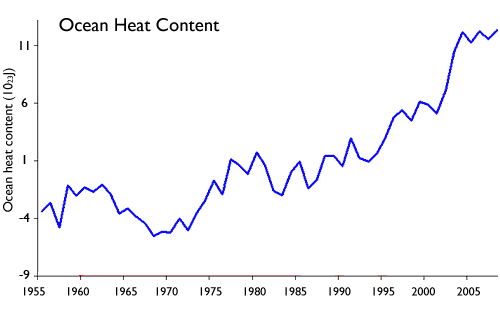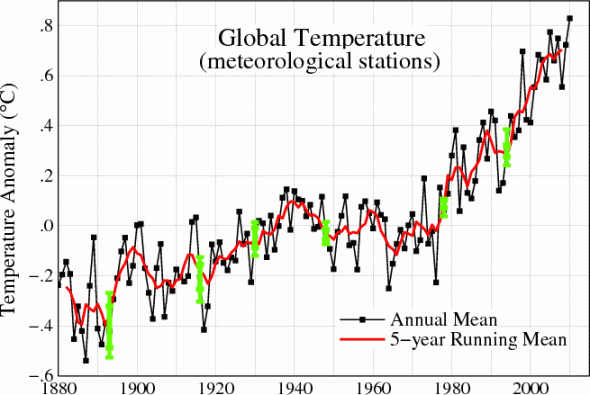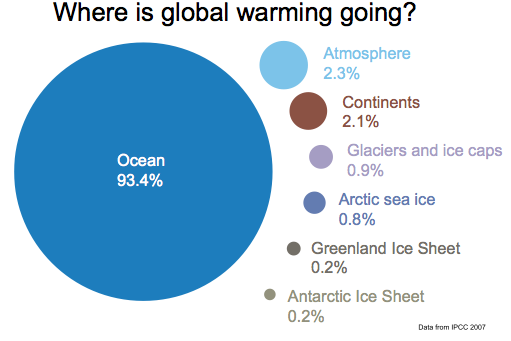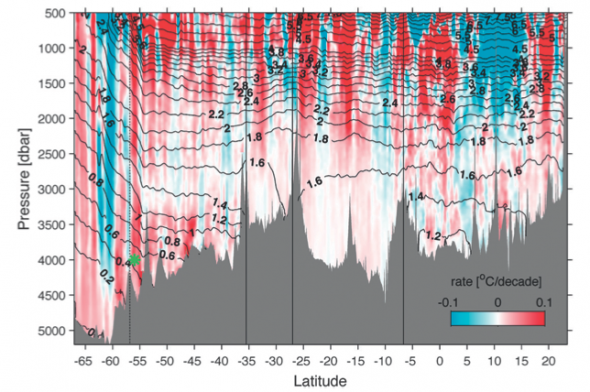The greenhouse gases we are emitting into the atmosphere trap heat from the sun that would otherwise be reflected off the surface of the earth. This is the greenhouse effect that is causing global warming / Anthropogenic Climate Change (ACC). Most people, including many scientists, think of the warming of the land and lower atmosphere when they think about climate change. For example, the temperature trend in the NASA graph below should look pretty familiar to most readers. It is based on measurements from thousands of terrestrial weather stations.
But what about the oceans, are they warming as well? Incredibley, ~93 percent of the excess heat being trapped by anthropogenic greenhouse gases is being absorbed by the oceans and only 2% by the atmosphere:
 Increasing ocean heat content, based on data in Levitus 2009 (which you can download here), replotted by John Cook.
Increasing ocean heat content, based on data in Levitus 2009 (which you can download here), replotted by John Cook.
And not just the shallow seas; even the very deep ocean is warming. You can see this trend in this graphic from Purkey and Johnson 2010 that plots the rate of warming across the worlds oceans with latitude on the horizontal axis and depth on the vertical axis. Red areas warmed and blue areas cooled during the study period (1980-2010). One of the very deep areas that is warming the fastest is around Antarctica (on the lower left portion of the graphic around latitude -55). This is especially concerning because this deep warming could affect ocean circulation and accelerate the melting of coastal sea ice in that region, leading to faster sea level rise.
Why does all of this matter?
1) Warming oceans has countless impacts on ocean life and ecosystems including how food webs function, ocean productivity, the metabolism and growth rate of fish and invertebrates and the survival of coral reefs. I will be writing about all of these topics in the coming months, but you can get a sneak preview in this video.
2) As ocean water warms, it expands; this thermal expansion is an important component of the rising sea levels we are currently seeing.
3) Much of this excess heat will eventually be released back into the atmosphere, causing further terrestrial warming. This means that the warming on land we are seeing today is mostly due to emissions decades ago. Think of it as “baby boomer warming”. Emissions from driving and other activities during the last decade will not really begin to warm the land until of middle of the current century. This lag between our actions and political decisions and the impacts of those choices is one of the reasons it is so hard to build a consensus to reduce emissions.



Leave a Reply